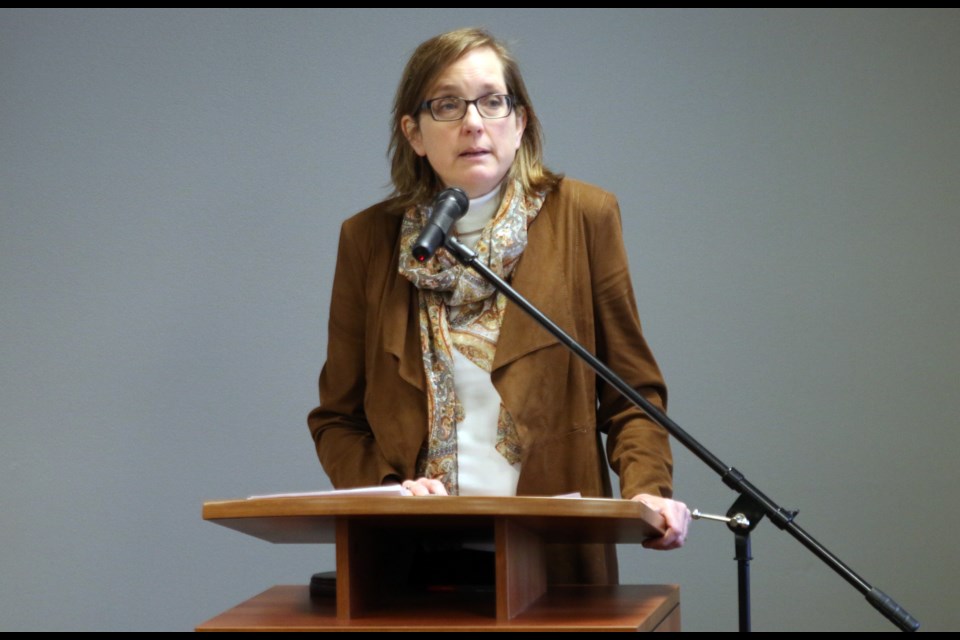THUNDER BAY - As the number of COVID-19 cases continues to rise across the country, particularly in the province of Ontario, public health officials in Thunder Bay say it’s important the city and individuals continue to take the necessary steps to reduce the risk of spreading the virus.
“We remain here in the province and in Canada more broadly in containment mode, which is about limiting the spread of COVID-19 cases and overall slowing the spread of this virus in our communities,” said Thunder Bay District Health Unit CEO Janet DeMille during an update to media on Monday.
In Canada there are 324 cases as of Monday, with Ontario having the highest number of cases at 145. However, DeMille said there are still no confirmed cases in the Thunder Bay district and no evidence of community spread.
It was announced on Saturday that a woman in Fort Frances tested positive for COVID-19 after returning to Canada from a Caribbean cruise operating out of the United States. The Northwestern Health Unit said there is no risk of transmission to the general public and those who were in close contact with the woman are in self-isolation, including an individual in Thunder Bay.
“As I indicated before most of the new cases of COVID-19 are travel related and this is what we expect to see in Northwestern Ontario - people returning from various places in the world, including the United States, who may be bringing back COVID-19,” DeMille said. “It would be not be surprising that we see more of these travel related cases here. But that does not mean there is community spread of the virus.”
The Health Unit is advising all individuals returning from international destinations, including the United States, to self-isolate for 14 days and contact Telehealth or the Health Unit if symptoms arise. Self-isolation does not apply to those travelling within Canada, DeMille said.
“If people do the responsible thing and self-isolate when they come home and follow-up with public health if they have symptoms, that really minimizes the risk of spread,” she added.
For those who may develop symptoms, DeMille is advising to use Telehealth or call the Thunder Bay District Health Unit.
An assessment centre has been setup outside of the Thunder Bay Regional Health Sciences Centre and will be open and operational on Tuesday.
“This is not a walk-in place to go,” DeMille said. “You need to be referred either through Telehealth or the Health Unit. It is very important that you don’t attend the assessment centre if you don’t have symptoms. There is a self-assessment tool now available on the TBDHU website to help you understand if you may need to be assessed.”
As of Monday, 32 people have been tested for COVID-19 in Thunder Bay, including 10 new tests conducted over the weekend. Of those tested, 16 have come back negative.
DeMille stressed that if a case is confirmed in the city of Thunder Bay, the Health Unit will notify the public and it is important to not be taken in by rumours and misinformation being spread on social media and non-credible sources.
“There are many rumours circulating on social media about cases that are potentially here,” she said. “We hear about them every day. I want to let you know that I will tell you when there are cases of COVID-19 in this area.”
When a case is found in the city, DeMille said it is difficult to determine how it might spread or to what extent, which is why it’s so important to follow the measures that have already been put in place.
“I am pleased with the measures that have been put in place and I do expect more to be put in place as we move forward, whether it’s federally, by the province, or even locally,” she said. “But it’s also about what we do as individuals and as families that will all contribute to reducing the spread. If we all work together and do the right thing, we will do well.”
In terms of instituting further measures, such as closing down businesses or public transit, DeMille said that needs to be discussed because it can have significant consequences.
“There is also a downside to those closures that need to be considered,” she said. “That cannot be done indiscriminately, they must be thoughtfully to mitigate any unintended consequences of implementing those measures.”
DeMille added that the city’s geographical isolation is an advantage but the city must also be seen as a gateway to the rest of the region, so actions taken here can help protect smaller, more remote communities throughout the north, including First Nations, which are at a higher risk.
“I have a concern with respect to First Nation communities in terms of the impact this could have on them,” DeMille said. “I think they too have the advantage of putting in some measures, perhaps related to travel that will help them protect their communities.”
People are advised again to reduce the spread of the virus by washing hands regularly, avoid touching your face, and staying home when sick.
“We want to slow the spread of the virus in this community,” DeMille said. “That will help us all and it will help our health care system.”
